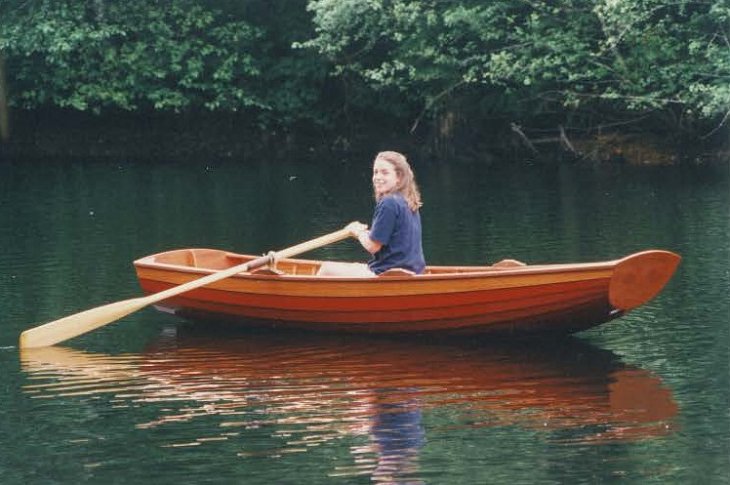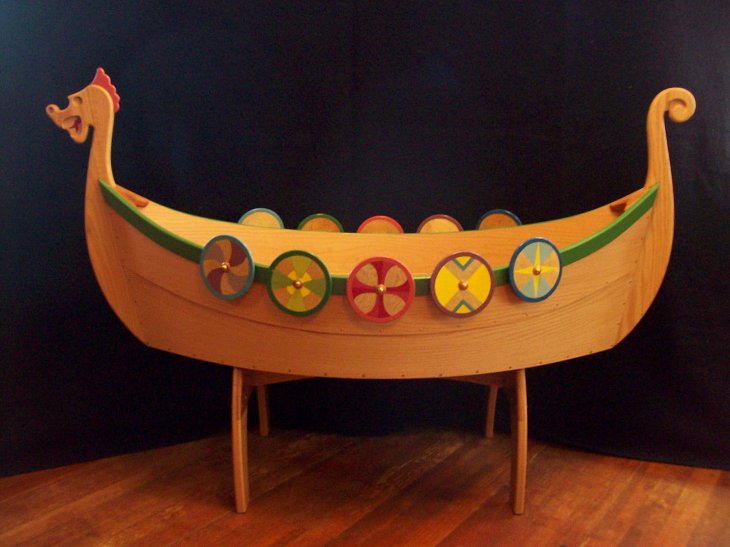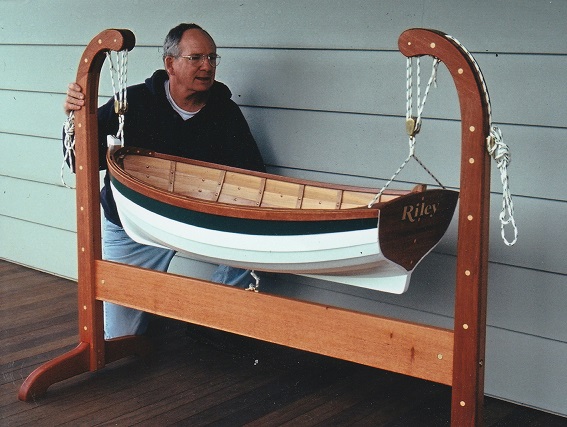There Is No Mystery To Boatbuilding
The unusual curves and shapes of a boat tend to intimidate the novice, but once you take a little time to study a well-drawn and complete set of wood boat plans you begin to see the logic of the assembly and as you get involved in the actual set-up and construction of a wooden boat you soon learn that the seemingly complicated shapes are readily accomplished using very basic tools and the natural bending qualities of wood.
The first boat I built was a sailing skiff similar in design to Footloose. I had few tools and no woodworking experience but I had grown up on a saltwater estuary in Oregon and was determined to create a vessel that would allow me to explore that wonderful playground. The result was a respectable little boat that rowed and sailed well, but more importantly the project gave me the knowledge and confidence to try my hand at
more challenging designs. I learned that a few hand tools can do a lot of work. I also learned that this kind of woodworking is more art than science and much of it is accomplished by cut-and-fit, a little at a time, till things match up. And I got a wonderful feeling of accomplishment from creating from a pile of lumber, some nails and glue, a useful and attractive boat that provided many years of pleasure.

Why Build With Wood?
Besides wood’s obvious structural properties of light weight and strength, it has many other qualities that make it the ideal material for building boats: The natural bending characteristics of wood automatically work to create boats of pleasing and efficient form. Wood is both durable and resilient, making for craft that, if properly maintained, can last a lifetime. Wooden boatbuilding requires only very simple tools and much of the joinery can be accomplished with hand tools, which add a special element of satisfaction to any project.
Thousands of boats of every possible description have been designed to take advantage of the properties of wood. Wood is both readily available and relatively inexpensive and suitable lumber for boatbuilding can be found in virtually every part of the world. Wood is pleasant and easy to work with and is both beautiful and pleasing to the senses.
Easy-to-follow Plans/Boat Building Manual
All of the boat plans from Jordan Wood Boats were developed and drawn with the non-professional or first-time boatbuilder in mind. The plans for each boat are easy to follow and require no lofting. They include large-scale construction drawings for all assemblies and full-size patterns where appropriate. To clarify the building process, comprehensive construction notes describing all components are number-keyed to the corresponding assemblies in all the drawings. Also included for each boat is a diagram for a simple, inexpensive building jig that allows the boat to be securely set up and assembled without fear of something going adrift, as is often the case with jigless construction.
And, for a complete guide to my style of boatbuilding, consider adding my book, “Boatbuilding My Way”, to your cart. This comprehensive manual details the construction methods, and time and labor-saving techniques I have developed over the years to simplify and enhance the building process. It is the ideal companion to plans from Jordan Wood Boats.


Construction Methods
My boats are designed to be built by traditional or “semi-traditional” methods. By semi-traditional I mean they may employ modern materials such as marine plywood but they are assembled using transverse frames and/or longitudinal structural members; a system that has proven over many years to result in boats of superior strength and durability.
I do not use the stitch-and-glue method of boatbuilding because of several factors that are inherent in this type of construction: Stitch-and-glue requires the use of large quantities of epoxy which is very messy, toxic and expensive and in some applications saves little, if any, time or weight. When no building jig is used it is extremely hard to keep the various hull parts in perfect alignment and the result is often a boat with humps and twists where there should be only fair, sea-kindly lines.
But the main reason I disapprove of some of the “high-tech” construction methods is that I do not like the kind of joinery they encourage. After all, building a wooden boat is one of the few endeavors left these days that challenge both hand and mind. A little time and work is required to learn the simple joinery techniques of traditional wooden boatbuilding, but the satisfaction to be gained is enormous and both the trade and the product are deserving of the effort.
